As someone who spent six months backpacking across New Zealand, I’m often asked what makes this country so special. The truth is, describing New Zealand’s landscapes feels like trying to explain colors to someone who’s never seen them. “New Zealand isn’t just one type of beautiful,” says Sarah Thompson, a local guide I met in Wellington who’s been leading tours for 15 years. “One day you’re walking on a glacier, the next you’re in a subtropical forest, and then suddenly you’re standing on a black sand beach. It’s like nature couldn’t decide what to create, so it chose everything.”
While you could spend months exploring every corner of these two islands, most travelers have to be more selective with their time. So I’ve put together this list of 19 places that showcase the incredible variety New Zealand has to offer, from its snow-capped peaks to its hidden waterfalls.
- Best tourist destination: Milford Sound
- Underrated hidden gem: Hokitika Gorge
- Best for families: Lake Tekapo
- Best for couples: Waitomo Caves
- Best for solo travelers: Tongariro National Park
- Best for outdoor fun: Abel Tasman Coast Track
Milford Sound, Fiordland
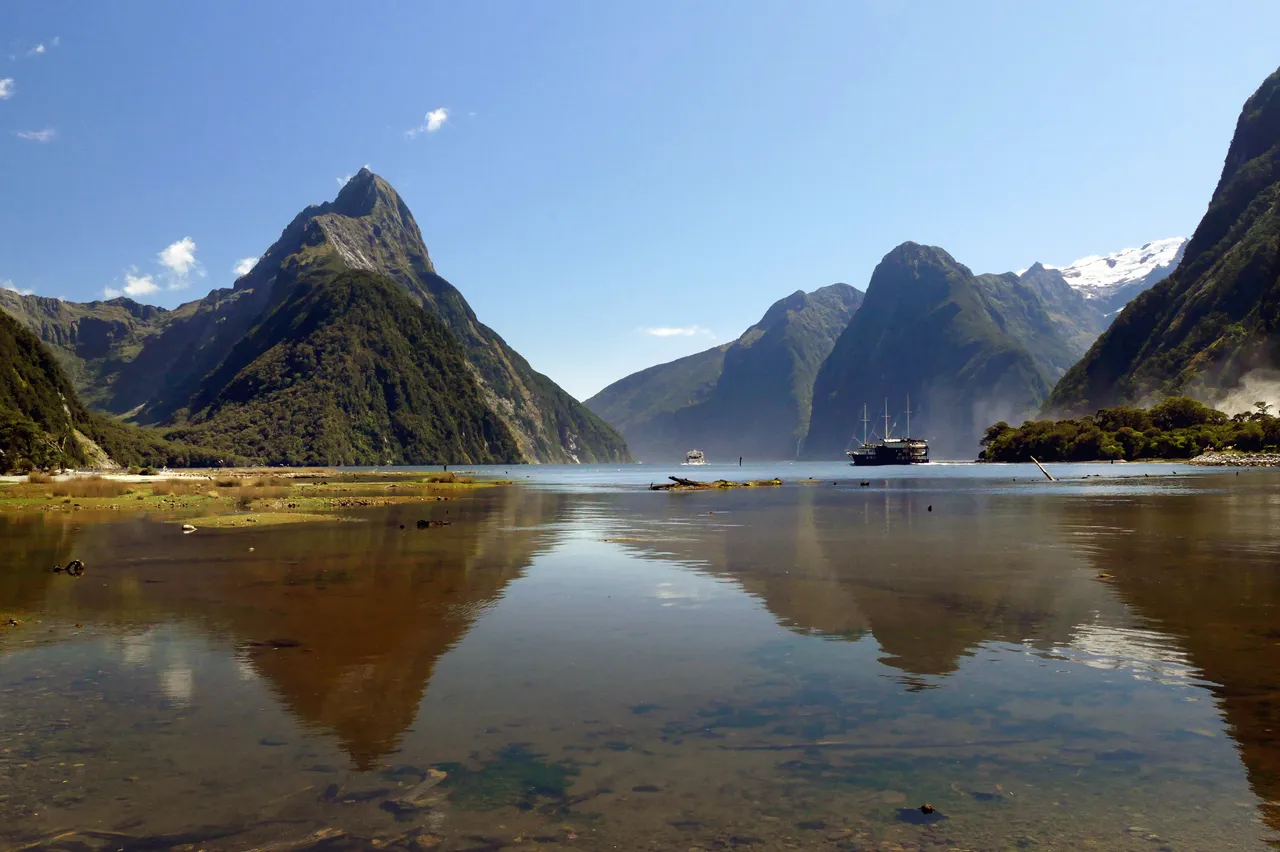
I first experienced Milford Sound back in 2018, and it remains New Zealand’s most famous fiord in the heart of Fiordland National Park. Carved by ancient glaciers, this natural wonder stretches for 15 kilometers from the Tasman Sea into the rugged wilderness. Steep cliffs rise dramatically from the dark waters, while waterfalls like Lady Bowen and Stirling Falls cascade down year-round. Seals and dolphins often play in these waters, and the peaks of Mitre Peak create a perfect backdrop for photos. Visitors can explore the sound by boat or kayak, with the morning mist adding an almost magical quality to the landscape. The nearby underwater observatory lets you peek 10 meters deep into the unique black coral ecosystems without getting wet.
Mount Cook National Park
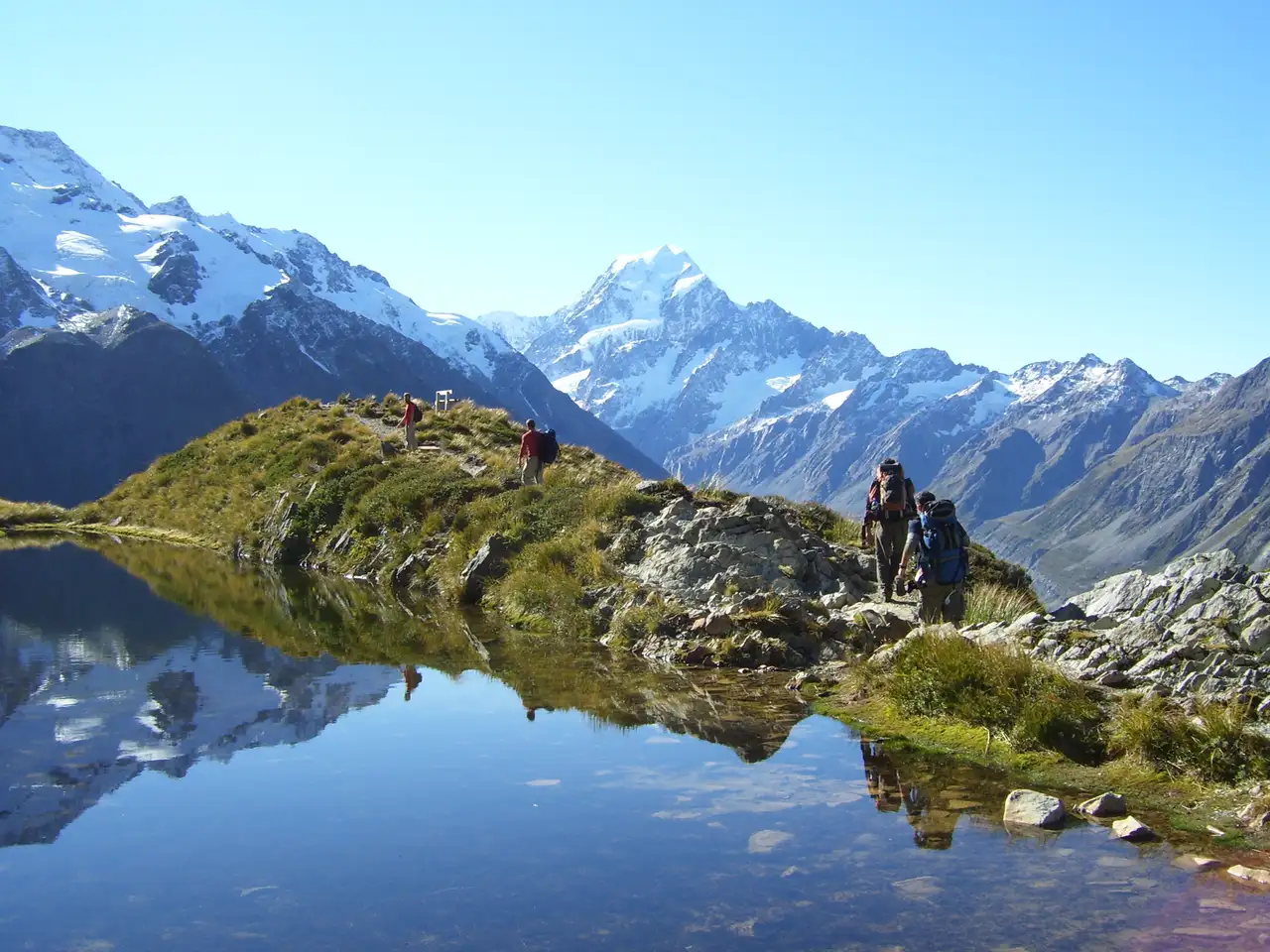
Located in the heart of New Zealand’s South Island, Mount Cook National Park is where nature shows off in the most impressive way. Like other mountain parks in the country, you’ll find great hiking trails and scenic viewpoints. But what sets this place apart is Aoraki/Mount Cook itself – New Zealand’s highest peak, reaching up into the clouds at 3,724 meters. The landscape here feels almost prehistoric, with glaciers creeping down mountainsides and valleys carved by centuries of ice movement. Because of its distance from major cities and light pollution, the park has earned its spot as one of the world’s best places for stargazing, and you’ll find eager astronomers setting up their telescopes as soon as the sun sets. Thanks to its rich mountaineering history, the park has become a base camp for climbers from around the world, and you can still visit the historic Hermitage Hotel where early adventurers planned their expeditions.
Lake Tekapo
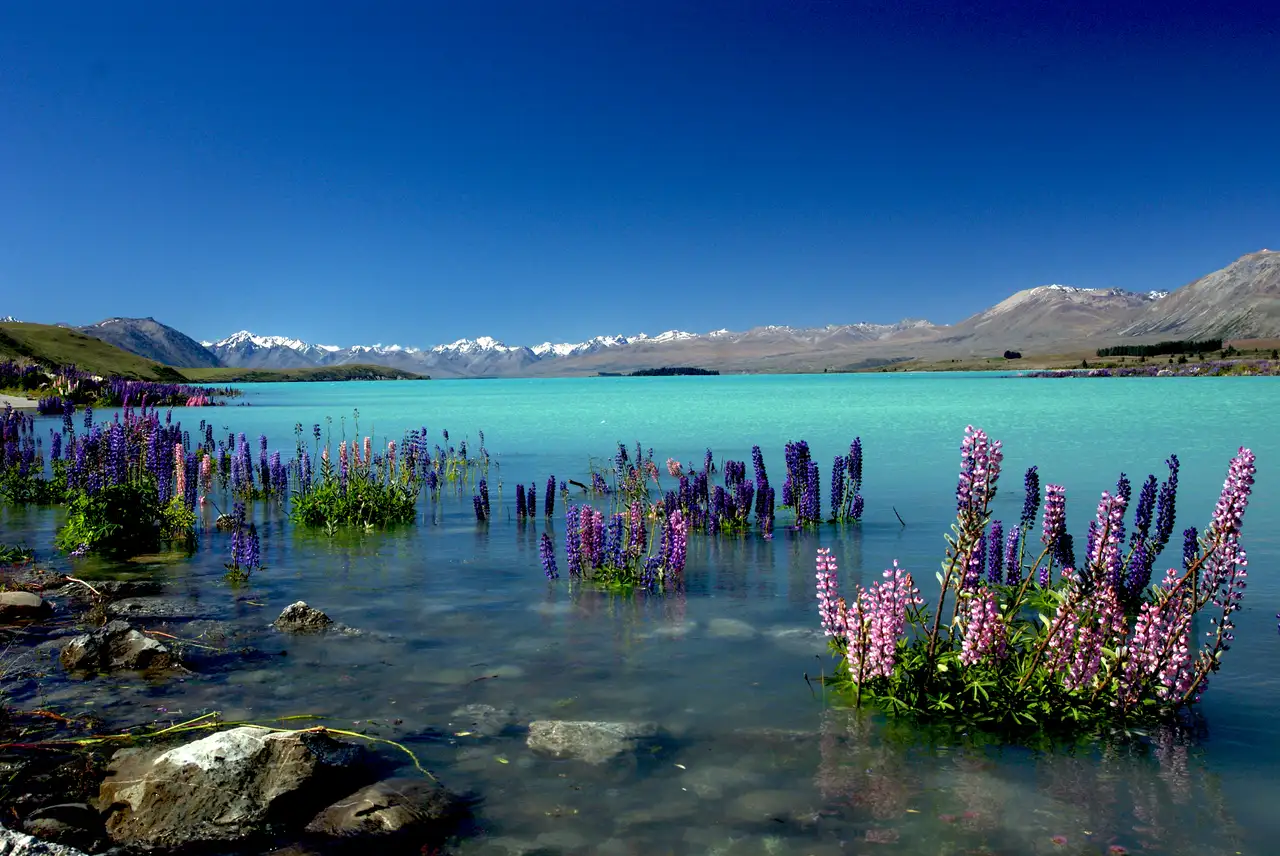
If you’re looking for one of New Zealand’s most beautiful lake views, head straight to Lake Tekapo. Nestled in the heart of the South Island’s Mackenzie Basin, this turquoise-blue lake sits against a backdrop of snow-capped peaks and fields of purple lupins. The iconic Church of the Good Shepherd stands on its shoreline, offering photographers the perfect frame for both daytime shots and nighttime stargazing under some of the clearest skies in the Southern Hemisphere.
Tongariro National Park
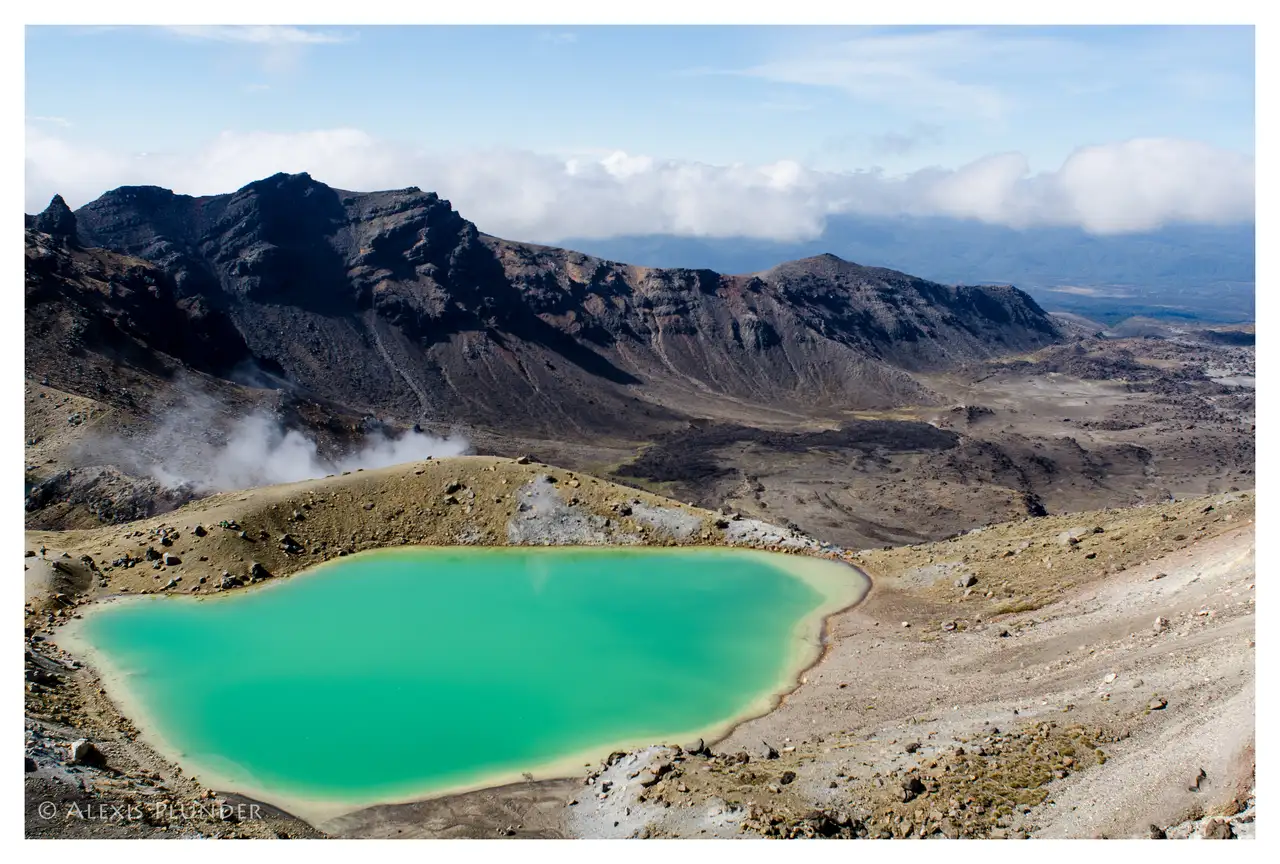
I always recommend Tongariro National Park to anyone seeking New Zealand’s raw natural beauty. Located in the heart of the North Island, this UNESCO World Heritage site features three active volcanoes – Mount Tongariro, Mount Ngauruhoe, and Mount Ruapehu – surrounded by emerald lakes and ancient lava flows. The park is home to the famous Tongariro Alpine Crossing, widely considered one of the best day hikes in the country.
Bay of Islands
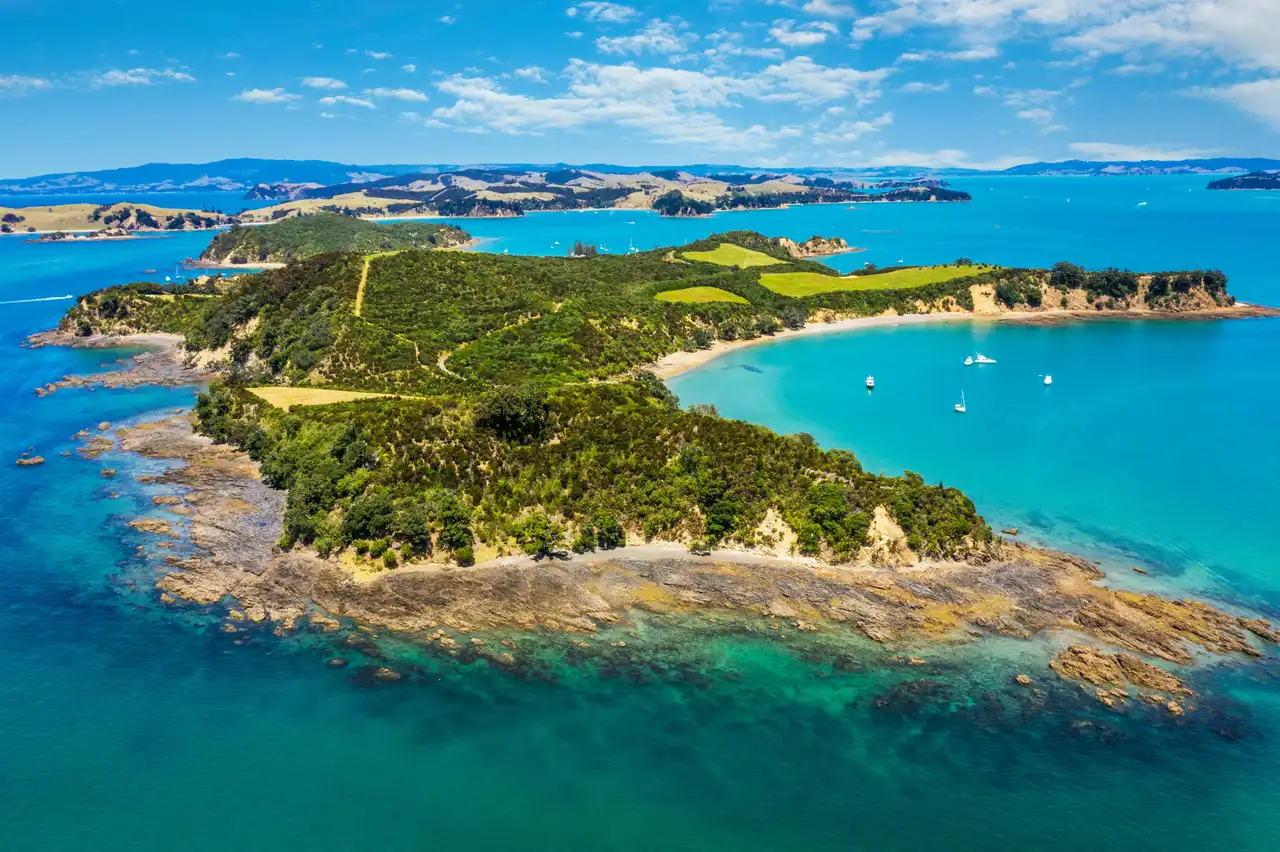
The Bay of Islands feels like a slice of paradise that jumped straight out of a postcard. This collection of 144 islands scattered along New Zealand’s northeastern coast brings together everything that makes this country special – from hidden coves and sandy beaches to small coastal towns full of maritime history. You can hop on a boat to spot dolphins playing in the crystal-clear waters, kayak through natural rock arches, or explore the historic sites where European settlers first met with local Māori tribes. It’s a place where taking it slow is the name of the game, whether you’re sailing between islands or just kicking back on a quiet beach watching the world float by.
Rotorua Thermal Pools
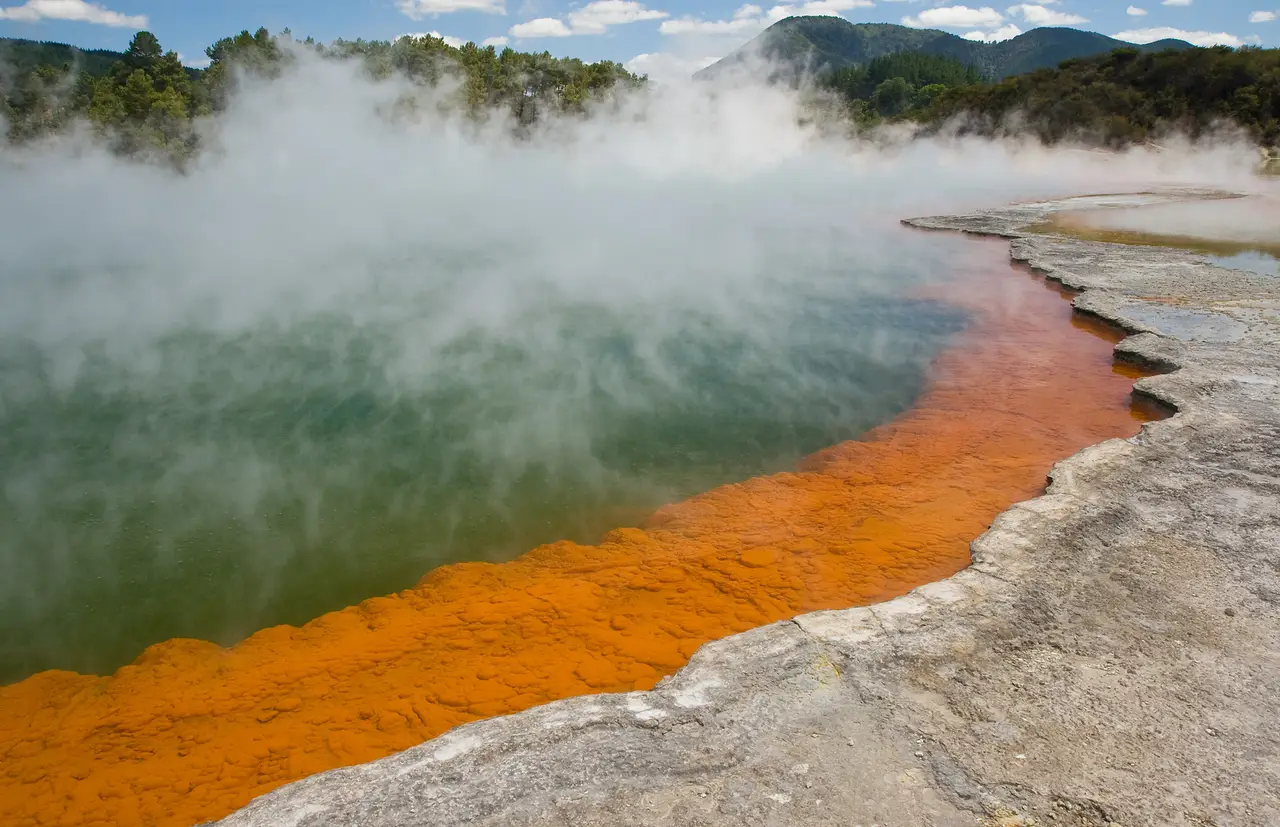
Many travelers head to Rotorua for its famous thermal pools, but this destination offers much more than just warm waters. The area’s geothermal activity creates a landscape dotted with bubbling mud pools, active geysers, and natural hot springs where you can soak while taking in views of the surrounding native forest. The local Māori people have used these therapeutic waters for centuries, and today visitors can experience both traditional and modern bathing facilities. Whether you’re looking to unwind in a peaceful forest pool or enjoy a family-friendly hot spring complex, Rotorua’s thermal attractions provide year-round appeal for all types of travelers.
Franz Josef Glacier
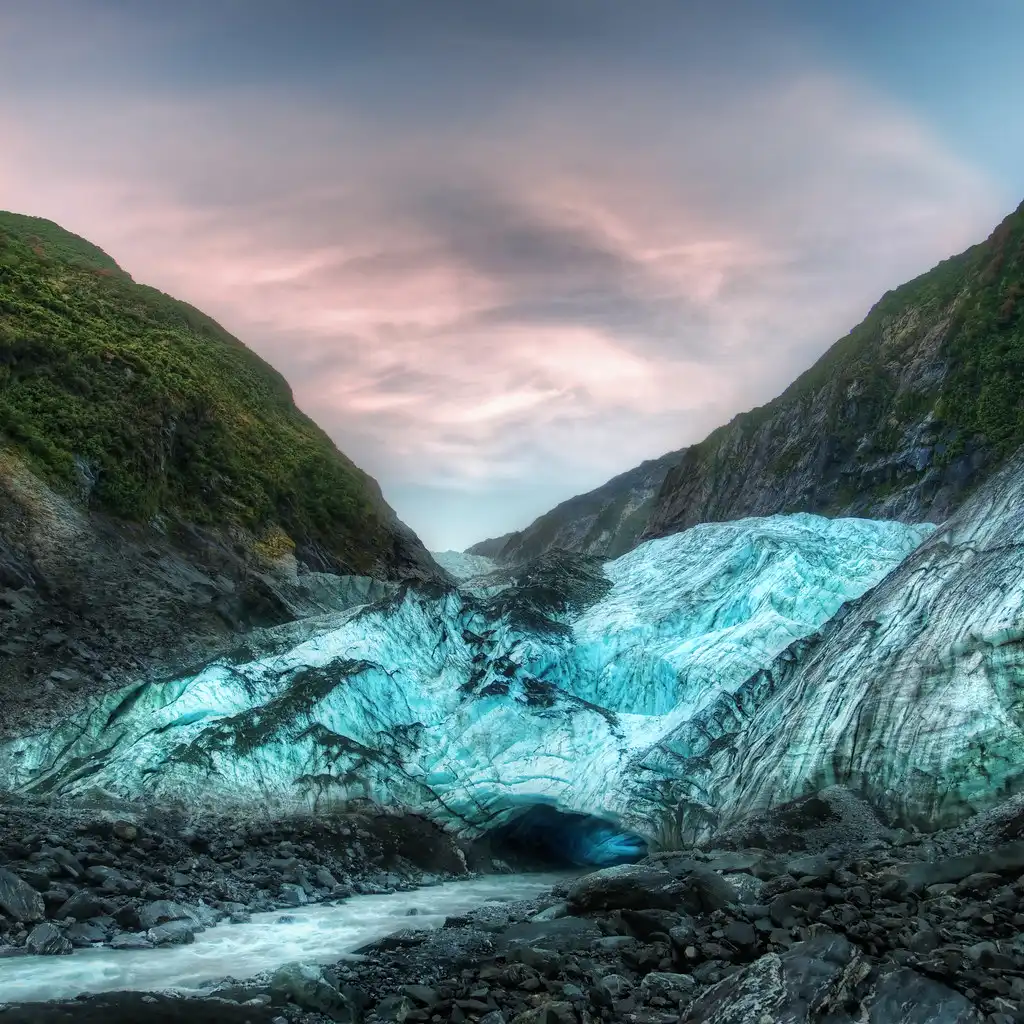
I’ve hiked a lot of New Zealand’s trails, but Franz Josef Glacier offers something truly different from the rest. This massive river of ice flows from the Southern Alps down into temperate rainforest, creating one of the most accessible glaciers in the world. You can walk right up to its terminal face on a guided tour, or take a helicopter ride to explore the blue ice caves and crevasses up high. The glacier moves up to 50 centimeters each day, constantly reshaping itself and the valley below. While the main viewing point is just a 45-minute walk from town, going with a guide onto the ice itself lets you experience this frozen giant up close – just be prepared for some careful footwork on the slippery surface.
Abel Tasman National Park

If you’re dreaming of a coastal paradise in New Zealand, Abel Tasman National Park needs to be on your list. This golden stretch of coastline draws visitors with its clear turquoise waters and sandy beaches that seem to go on forever. The park’s most famous feature is its coastal track – a 60-kilometer trail that weaves through native forest and along seaside cliffs, offering close encounters with fur seals and dolphins along the way. Whether you choose to kayak between hidden coves, hike a section of the track, or simply relax on a secluded beach, the park delivers the kind of natural beauty that makes New Zealand famous. It’s a place where you can spend days exploring and still feel like you’ve only scratched the surface.
Wanaka Lake
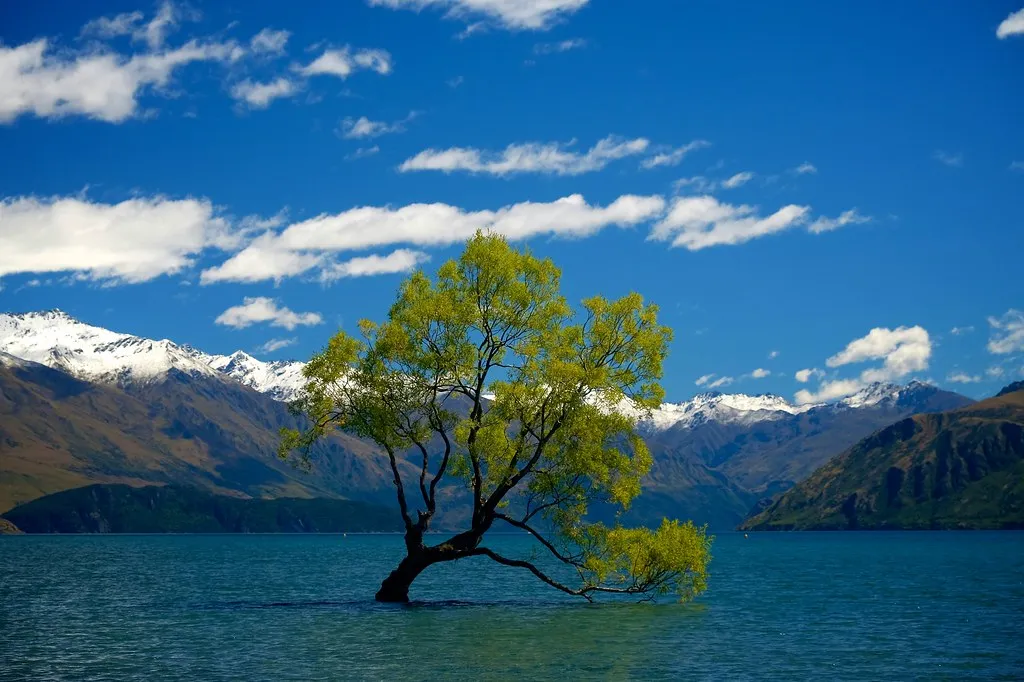
In the heart of New Zealand’s South Island, Lake Wanaka sits like a mirror reflecting the peaks of Mount Aspiring National Park. Unlike the tourist-packed streets of Queenstown just an hour away, Wanaka moves at its own gentle pace. You’ll find locals swimming in the crystal-clear waters during summer or skiing the nearby slopes in winter, proving this lakeside town knows how to enjoy every season. The area’s most photographed spot is a lone willow tree growing right in the lake – dubbed #ThatWanakaTree by social media fans. But what really sets Wanaka apart is how the surrounding mountains create perfect conditions for outdoor adventures, from hiking the Rob Roy Glacier track to mountain biking through Sticky Forest. And if you stick around until evening, you’ll see why astronomers love this place – the stars here shine so bright, they seem close enough to touch.
Hooker Valley Track
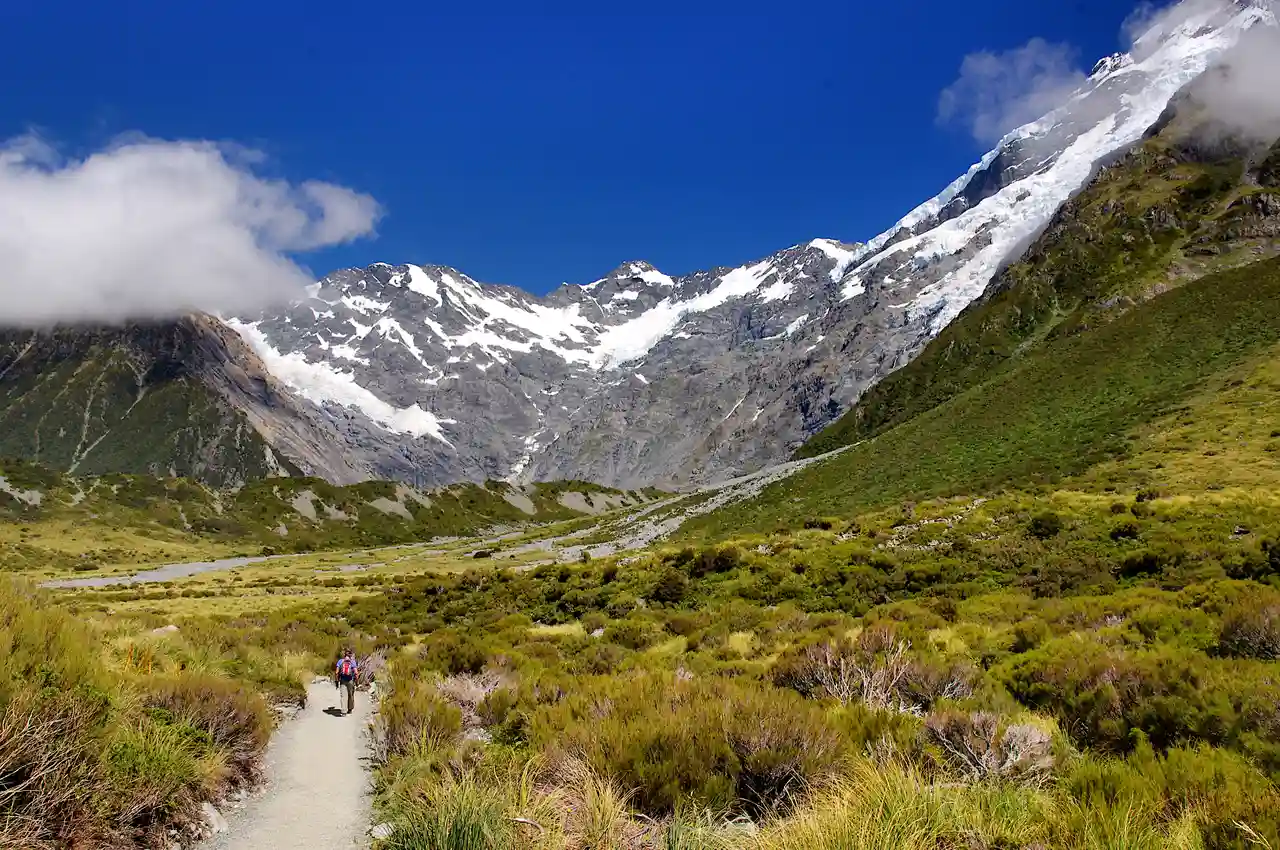
One of New Zealand’s most rewarding day hikes, the Hooker Valley Track takes you on a gentle 3-hour journey through the heart of Aoraki/Mount Cook National Park. The trail winds past alpine streams and over three swing bridges, each offering better views than the last of the snow-capped peaks ahead. What makes this track special isn’t just the relatively easy terrain – it’s how the path leads you straight to the foot of New Zealand’s highest mountain, where the Hooker Lake’s glacier-fed waters reflect Mount Cook’s impressive face. Even if you’re not much of a hiker, this well-maintained track lets you experience the raw beauty of the Southern Alps without breaking too much of a sweat.
Cathedral Cove
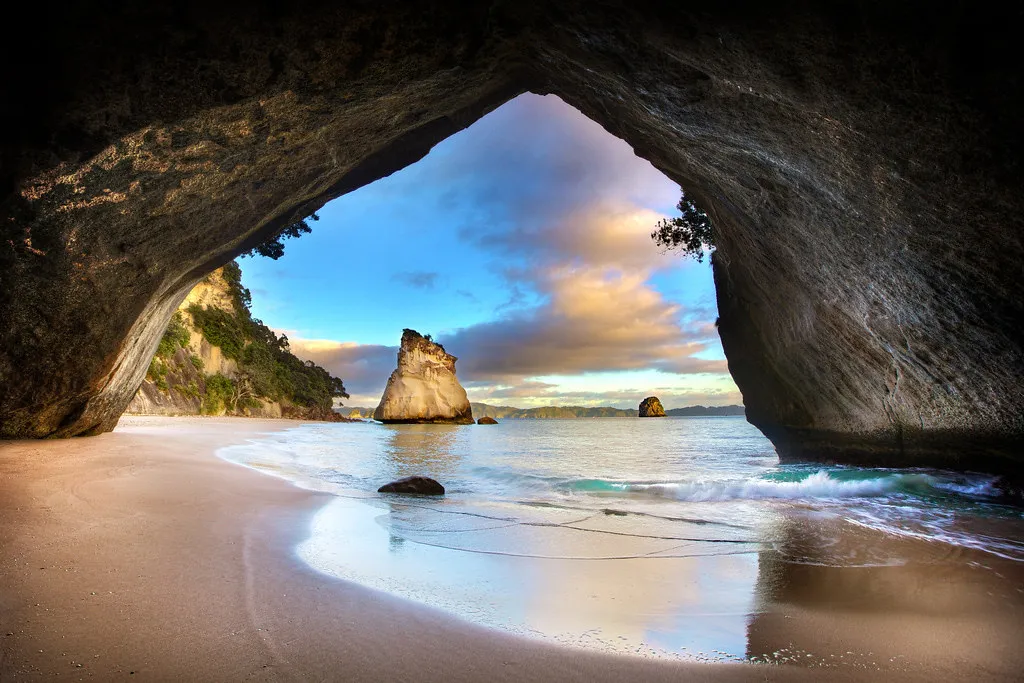
Cathedral Cove has to be one of the most unforgettable spots I’ve discovered in New Zealand. This pristine beach on the Coromandel Peninsula feels like something out of a movie set, with its massive limestone arch framing views of the crystal-clear waters and offshore islands. Getting there requires a bit of effort – you’ll need to take a 45-minute walk down through coastal forest to reach the beach, but that’s part of what makes it special. Time your visit for low tide and you can wander through the towering natural archway connecting two secluded beaches, splash in the gentle waves, or simply watch the play of light and shadow as the sun moves across the rocky formations. It’s the kind of place that reminds you why New Zealand earned its reputation for natural beauty.
Lake Pukaki
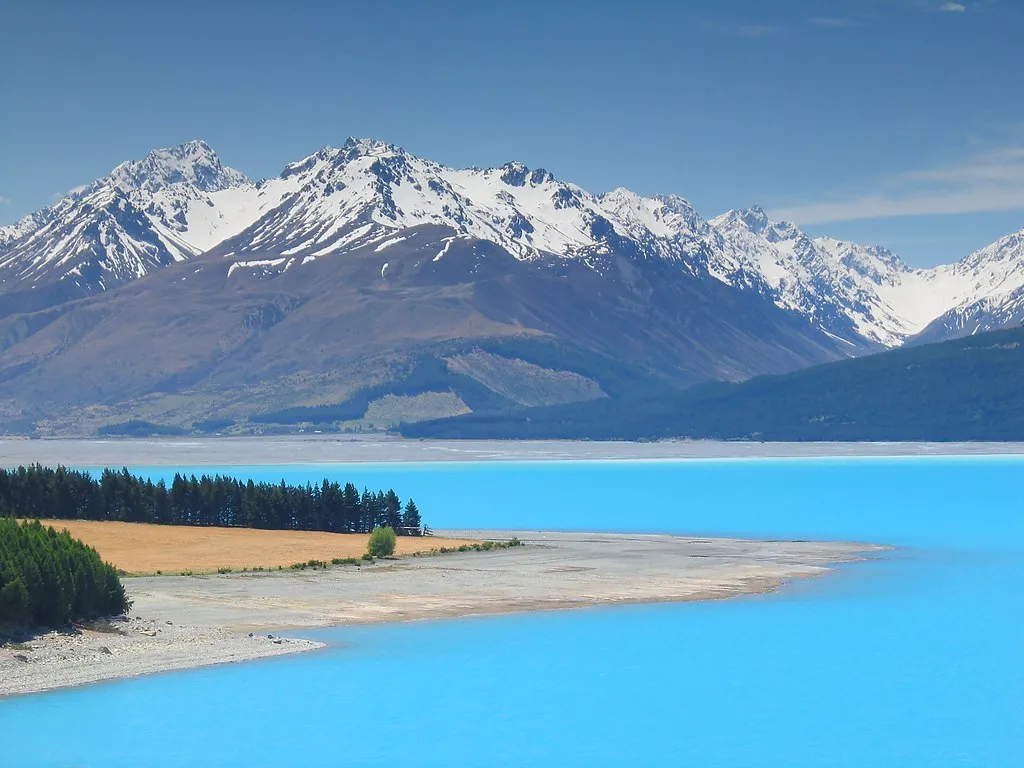
Located in the heart of New Zealand’s South Island, Lake Pukaki serves up some of the country’s most recognizable views. The lake’s distinctive milky-blue waters stretch out toward snow-capped Mount Cook, creating that classic shot you’ve probably seen on postcards. But what makes this place really special isn’t just the lake itself – it’s how the whole scene comes together. Glacial flour from the surrounding mountains gives the water its unique color, and on calm days, you’ll catch perfect reflections of the Southern Alps on the surface. While plenty of folks just pull over at the viewpoint for a quick photo, those who stick around can walk along the shoreline, have a picnic, or try their luck at catching salmon in these chilly waters.
Mount Taranaki
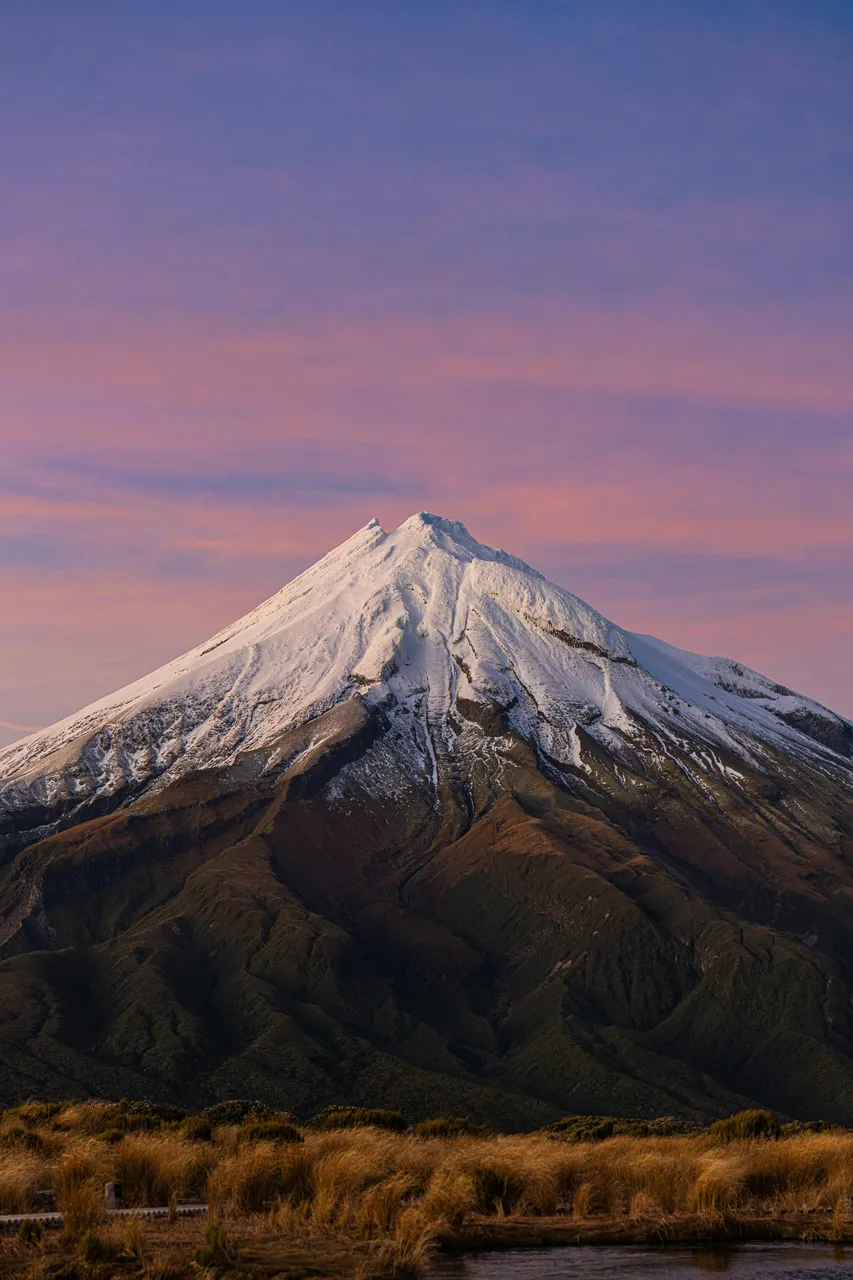
Many travelers head to Mount Taranaki for its perfect volcanic cone shape, which rises dramatically from the surrounding farmland on New Zealand’s North Island. This distinctive peak doubles as both a sacred Maori site and one of the country’s most photographed mountains, often drawing comparisons to Japan’s Mount Fuji. In winter, the mountain’s slopes become a playground for skiers and snowboarders, while summer brings hikers who tackle the challenging summit climb for views across the Tasman Sea. The surrounding Egmont National Park offers shorter walks through moss-covered forests and past rushing waterfalls, making it possible to experience the mountain’s beauty even if you’re not up for the full summit adventure.
Queenstown Hill
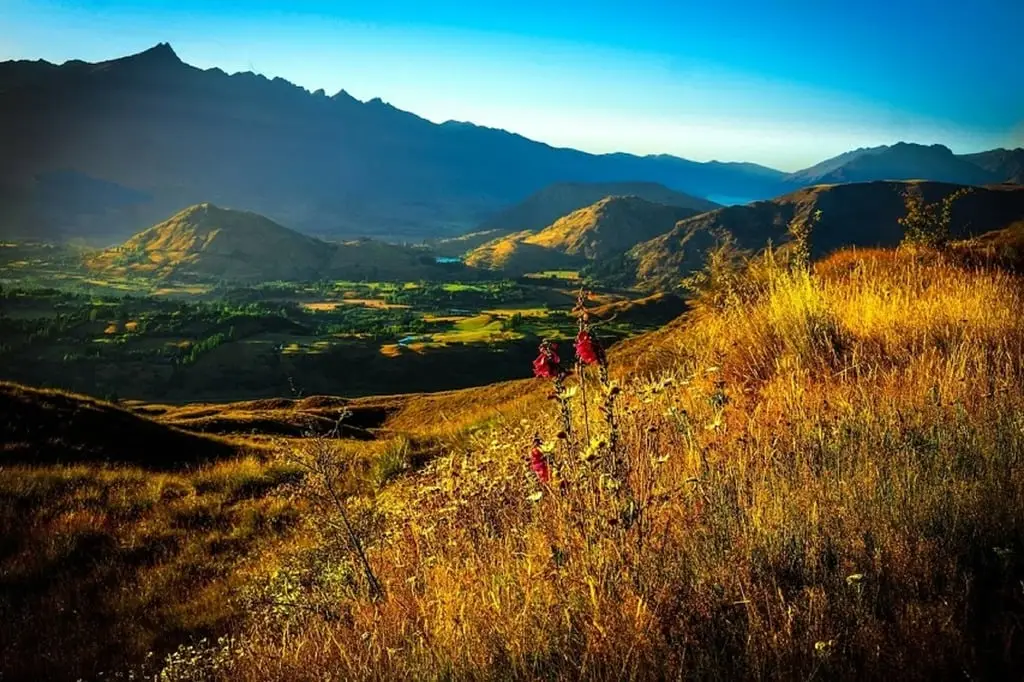
I first discovered Queenstown Hill on a backpacking trip through New Zealand’s South Island in 2019. Rising 907 meters above sea level, this hiking trail winds through native beech forest just minutes from downtown Queenstown. The 3-hour loop track takes you past the “Basket of Dreams” sculpture at the halfway point, where hikers pause to soak in views of Lake Wakatipu and the surrounding peaks. From the summit, you’ll spot the Remarkables mountain range, Cecil Peak, and Walter Peak spread out before you like a natural amphitheater. The trail is popular with both locals and visitors, especially at sunrise when the first light paints the mountains in soft golden hues and the lake sparkles below.
Bet You Didn’t Know:
You might think Queenstown Hill is just another hiking spot, but this 1.5-mile trek actually played a major role in New Zealand’s gold rush during the 1860s when miners would climb it daily looking for new deposits. Today, hikers who reach the summit at 2,319 feet are rewarded with 360-degree views of Lake Wakatipu, The Remarkables mountain range, and Cecil Peak – the same panorama that helped those early prospectors scout for valuable minerals over 150 years ago.
Doubtful Sound

In all my travels around New Zealand, Doubtful Sound stands out as the country’s most mysterious fjord. This lesser-known cousin to Milford Sound stretches three times longer and feels worlds away from civilization, carved deep into the wilderness of Fiordland National Park. The journey here isn’t quick or simple – you’ll need to take a boat across Lake Manapouri, then a bus over the mountains, before finally reaching the sound itself. But once you’re gliding through the dark waters beneath towering cliffs draped in waterfalls, you’ll understand why locals call this place “the Sound of Silence.” It’s the kind of spot where you can float for hours without seeing another boat, watching fur seals lounge on rocks and dolphins play in the wake.
Lake Matheson
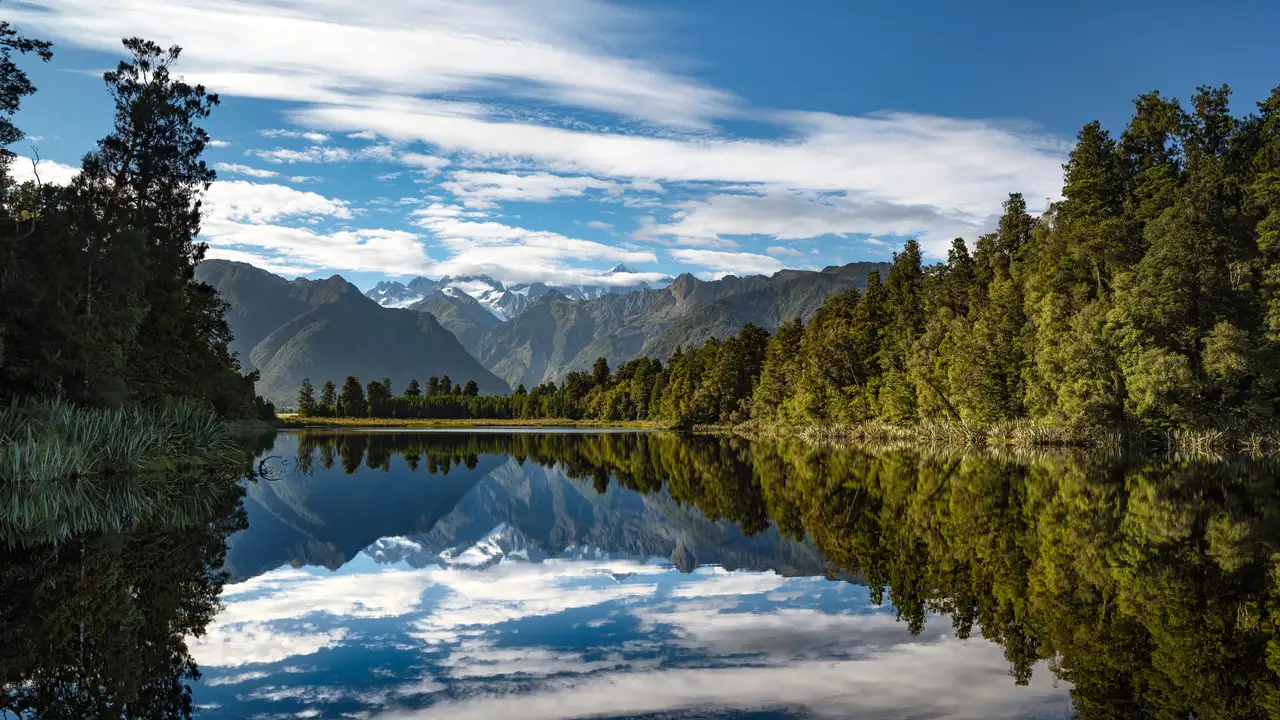
Many nature lovers flock to Lake Matheson for its mirror-like reflections of New Zealand’s highest peaks, Mount Cook and Mount Tasman, but this spot offers more than just mountain views. The lake, formed by glacier movement thousands of years ago, sits within a peaceful native forest where a gentle walking track loops around the water’s edge. Early mornings often bring the calmest conditions, when the lake’s surface turns into a perfect mirror, creating what locals call “Reflection Island.” While photography draws crowds at sunrise and sunset, visitors can also spot native birds, enjoy a coffee at the lakeside café, or explore the surrounding ancient kahikatea and rimu trees any time of day.
Roy’s Peak
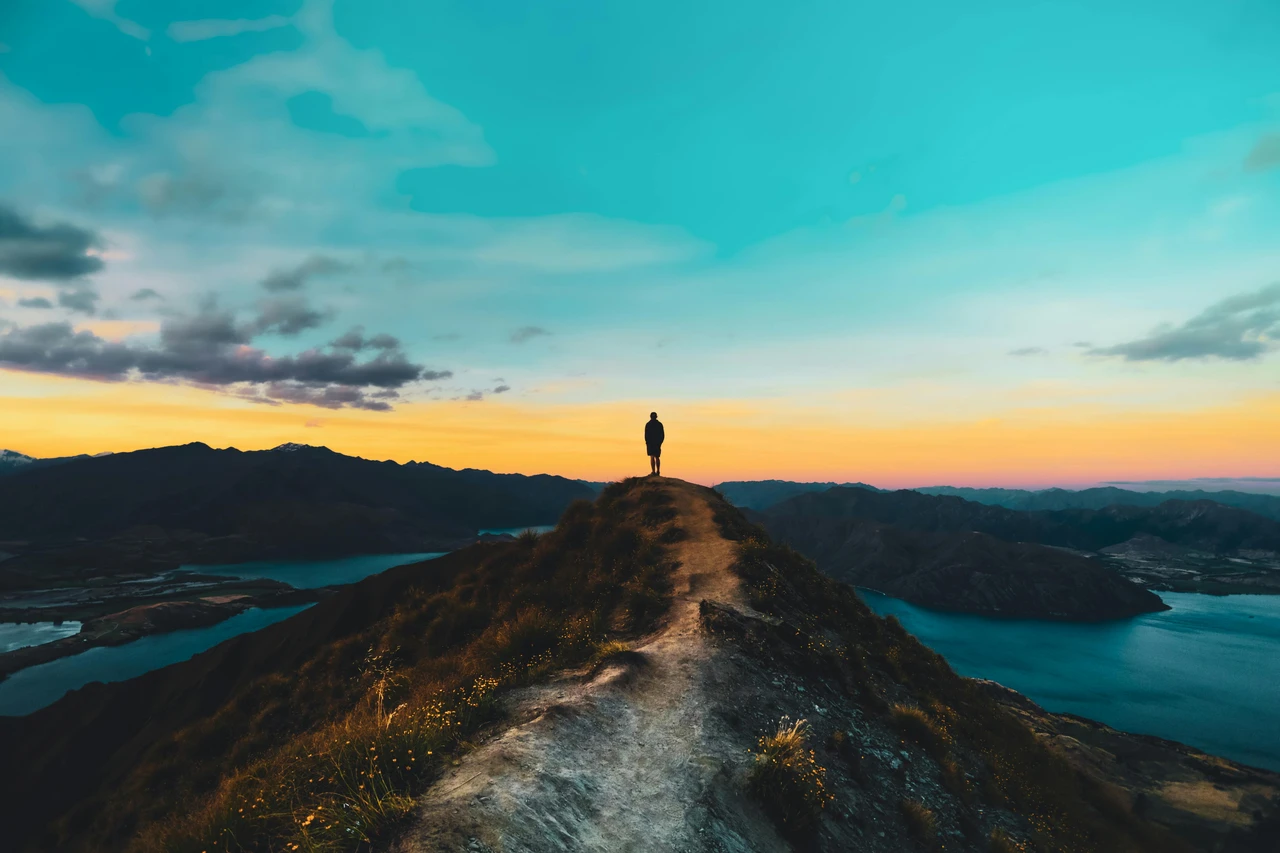
Hikers and photographers flock to Roy’s Peak for what many consider New Zealand’s most photographed view, but this South Island spot offers more than just a photo opportunity. The 8-hour return trek climbs steadily through sheep-filled grasslands before reaching the 1,578-meter summit, where Lake Wanaka and Mount Aspiring spread out before you in a display that feels almost surreal. While most visitors tackle the trail during summer months, winter brings snow-capped peaks and smaller crowds – though you’ll need proper gear and experience for cold weather hiking. No matter when you visit, the challenging climb rewards you with views that make every step worthwhile.
Waitomo Glowworm Caves
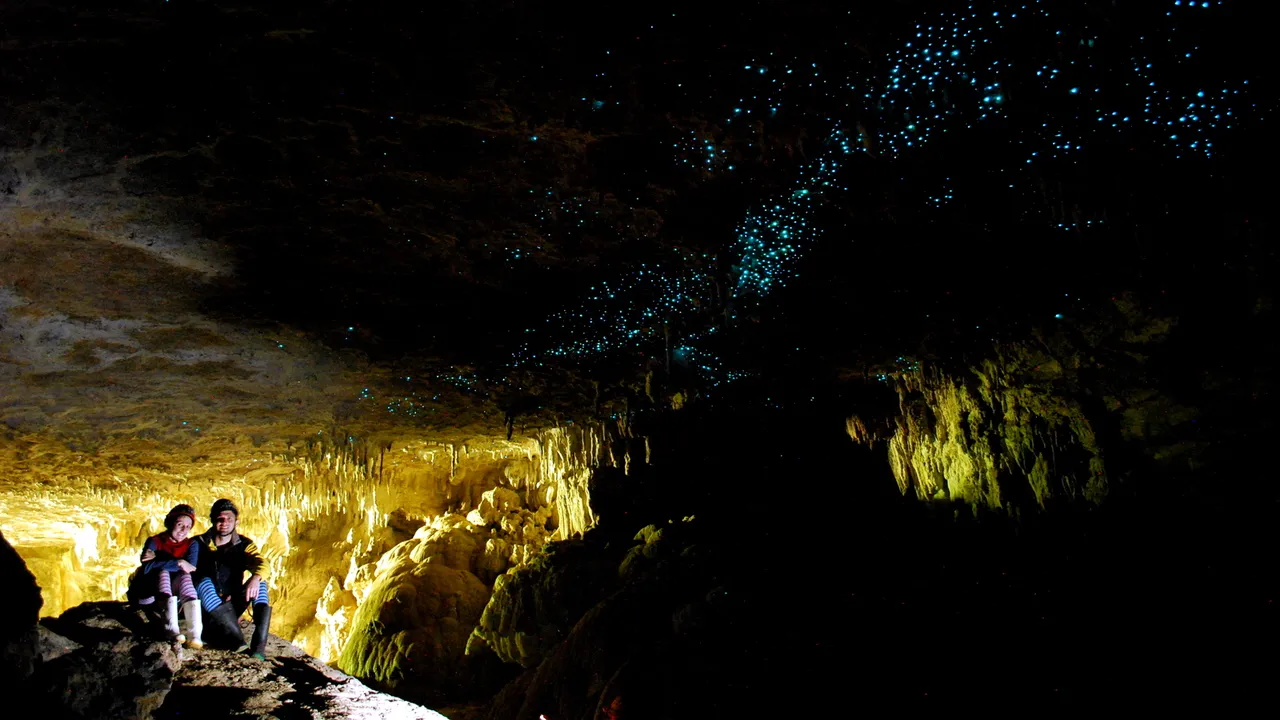
Looking for something truly magical in New Zealand? The Waitomo Glowworm Caves feel like they’re straight out of a fairy tale. These limestone caves stretch deep underground, where thousands of tiny glowworms create a natural light show that makes you feel like you’re floating beneath a starry sky. As you drift along in a small boat through the dark caverns, the ceiling twinkles with the blue-green light of these fascinating creatures. It’s not just about the light show though – the caves themselves tell a story that goes back millions of years, with remarkable rock formations that have been shaped by time and water. While it’s not the easiest place to photograph (those little glowworms are camera shy), it’s an experience that will stay with you long after you leave the caves.
Fox Glacier
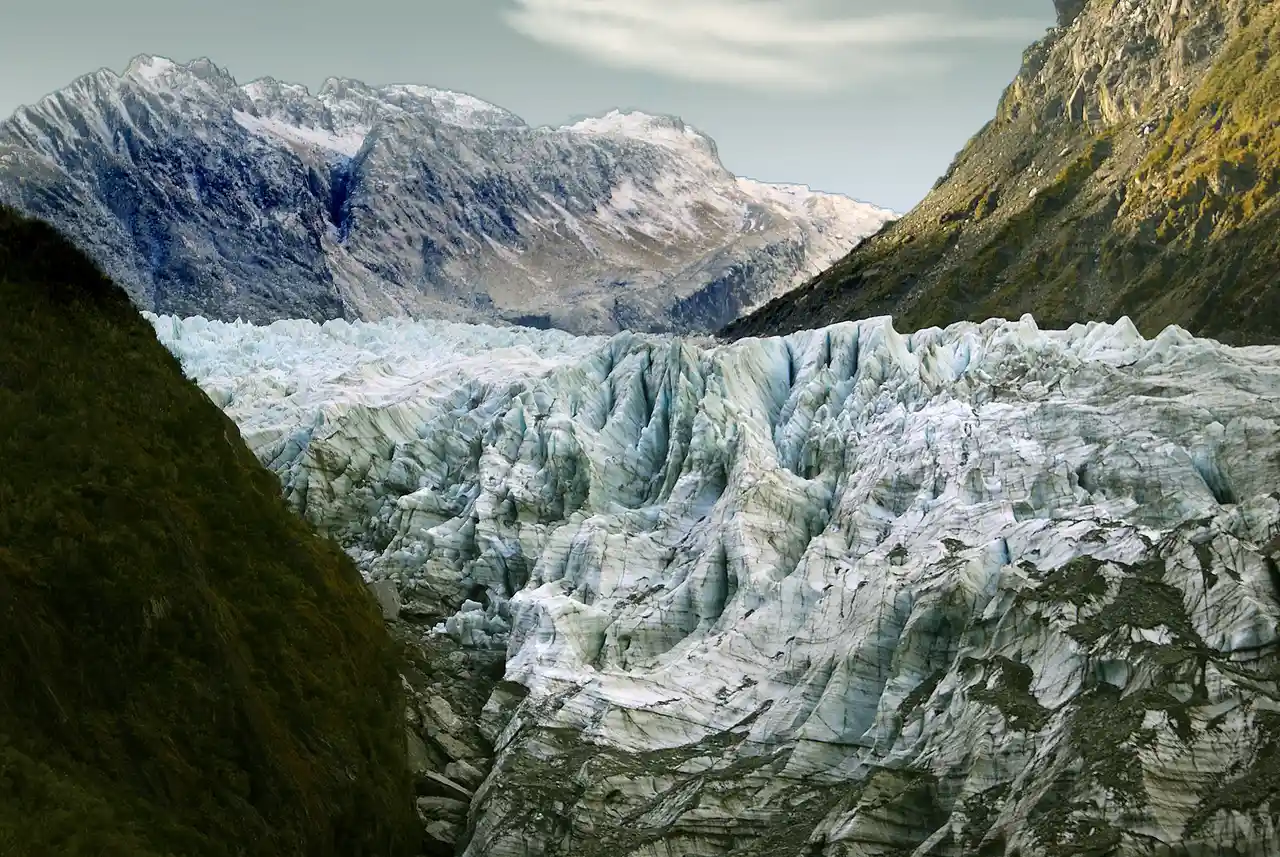
Many travelers journey to Fox Glacier for its massive river of ice, but this small township on New Zealand’s South Island offers much more than frozen adventures. The glacier, stretching 13 kilometers from the Southern Alps to temperate rainforest, creates unique opportunities for guided ice walks and helicopter tours. While the glacier draws most visitors, the surrounding area boasts several walking tracks through native bush, perfect for spotting local wildlife and taking in views of the Southern Alps. In winter, the township serves as a cozy base for exploring the icy landscape, while summer brings longer days ideal for hiking the many trails or kayaking in Lake Matheson, where on clear mornings, you can catch mirror-like reflections of Mount Cook and Mount Tasman.

